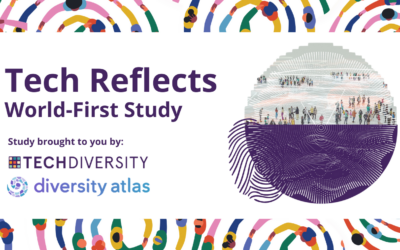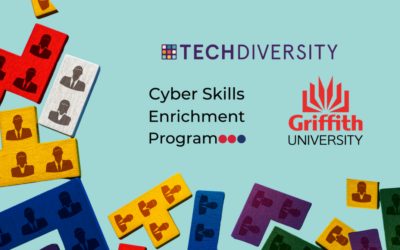One of the great truths of striving for diversity is “If you can’t see it, you can’t be it”.
What can organisations do to ensure that all their people are properly seen and heard – and how can we keep diversity at the heart of everything we do, especially as we start planning, then executing, our recovery strategies?
It was a question we asked a series of business leaders during a recent TechDiversity online discussion. Our panelists – Mac Ghani, managing director of Avanade Australia, Madeleine Grummet, founder of Future Amp, and Robbie Robertson, Deloitte partner, ably led by TechDiversity co-founder Soozey Johnstone -came up with some great practical steps that people can take to support all of our people right now.
They also stressed the importance of ensuring we keep diversity front and centre as we start to think about how we rebuild and recalibrate operations for the future.
That’s important because there’s a plethora of research showing that creativity comes from diversity – and success comes from creativity. But as Mac Ghani reminded everyone, you get the best results of all from a diverse and happy workforce; “If our people are happy our clients are happy. If our clients are happy our business is growing.” It’s something we need to remember as we navigate today and plan for tomorrow.
The key things from the discussion that really stood out for me were:
- Check in with all your people – how are they coping right now, are they OK? If they’re struggling how can you help?
- Double down on diversity especially if you have to lay people off or hire new staff – keep diversity front and centre in all your decision making.
- Seize the opportunity to build diverse communities online that span geographies – these can be sustained long after the pandemic abates keeping your people connected and supported.
- Create safe online spaces where people can connect – and encourage leaders to share their own stories about how they have tackled their pandemic challenges in order to break down barriers.
- Consider implementing a buddy system so that everyone – such as first nations people, LGBTQI, extroverts/introverts – has someone checking in with them.
- Build diversity into your recovery plan for future employment and engagement initiatives.
Are all our people ok?
If, like me, you’ve spent hours on Zoom or Teams calls – you have had the privilege of being invited into colleagues’ homes, you may have seen their children or met their dog, and have a bit more of an understanding of their lives outside the office and what they need to do to juggle work and life. That’s a real gift of deeper understanding that can help strengthen our work communities.
So take the time to ask how they are coping with the different way of working? It’s important to ask the question and really listen to the response – are all our people OK – or are they feeling marginalised, and if so what can we do to resolve that?
Let’s make sure our first lens is on merit and experience
And as we start to recover let’s take a leaf from Deloitte’s book and remove names from the CVs in the first round of job applications. Let’s make sure our first lens is on merit and experience and then start to review our shortlists for the mix of gender, orientation, background, age and neuro-diversity that will drive success.
These are the most difficult of days, but as our webinar showed, by coming together we can chart a clear course to a brighter future – for all of us.
Next Online Discussion – September 2nd
As we continue our diversity journey the last online discussion we hosted looked at how diversity can support a post COVID-19 recovery strategy, we also touched on why it makes business sense to promote a fully inclusive workforce, so join us for our next discussion, where we will take a deeper dive into exploring the why on September 2nd.
Repeatedly, diverse companies are able to demonstrate they are better at winning top talent, orientating themselves better with their customers and improving decision making. But what are the metrics to prove this? Please join us to find out more – register.



